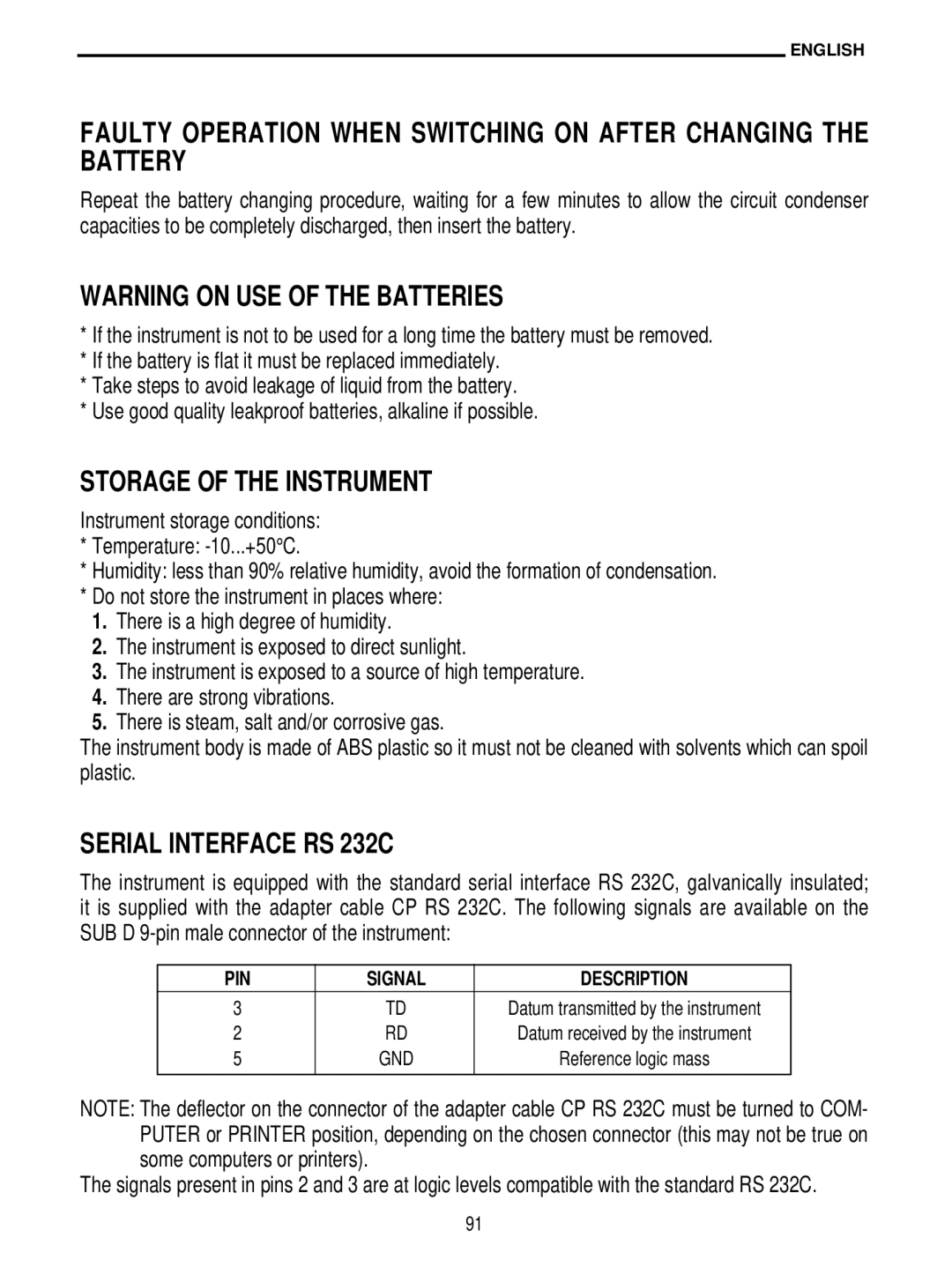ENGLISH
FAULTY OPERATION WHEN SWITCHING ON AFTER CHANGING THE BATTERY
Repeat the battery changing procedure, waiting for a few minutes to allow the circuit condenser capacities to be completely discharged, then insert the battery.
WARNING ON USE OF THE BATTERIES
*If the instrument is not to be used for a long time the battery must be removed.
*If the battery is flat it must be replaced immediately.
*Take steps to avoid leakage of liquid from the battery.
*Use good quality leakproof batteries, alkaline if possible.
STORAGE OF THE INSTRUMENT
Instrument storage conditions:
*Temperature:
*Humidity: less than 90% relative humidity, avoid the formation of condensation.
*Do not store the instrument in places where:
1.There is a high degree of humidity.
2.The instrument is exposed to direct sunlight.
3.The instrument is exposed to a source of high temperature.
4.There are strong vibrations.
5.There is steam, salt and/or corrosive gas.
The instrument body is made of ABS plastic so it must not be cleaned with solvents which can spoil plastic.
SERIAL INTERFACE RS 232C
The instrument is equipped with the standard serial interface RS 232C, galvanically insulated; it is supplied with the adapter cable CP RS 232C. The following signals are available on the SUB D
PIN | SIGNAL | DESCRIPTION |
3 | TD | Datum transmitted by the instrument |
2 | RD | Datum received by the instrument |
5 | GND | Reference logic mass |
|
|
|
NOTE: The deflector on the connector of the adapter cable CP RS 232C must be turned to COM- PUTER or PRINTER position, depending on the chosen connector (this may not be true on some computers or printers).
The signals present in pins 2 and 3 are at logic levels compatible with the standard RS 232C.
91
